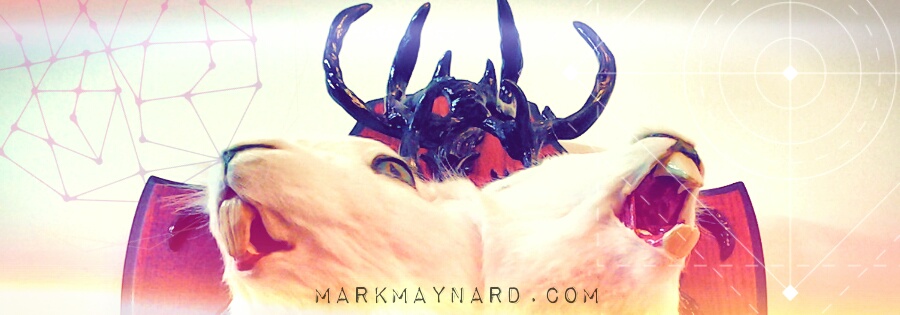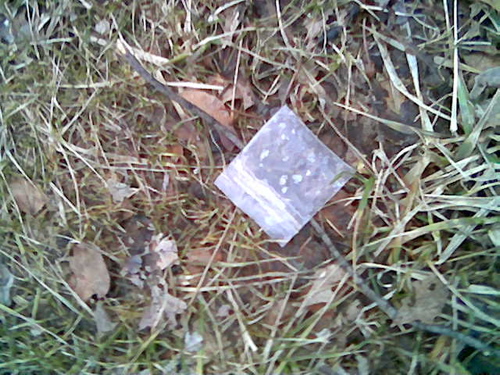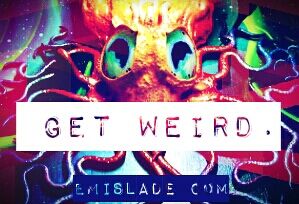For the past 17 years, the University of Michigan has overseen something called the Prison Creative Arts Project. Representatives from the University, as a part of this program, visit Michigan correctional facilities and facilitate workshops in theater, art, dance, music and creative writing. For the past 12 years, they’ve also held an exhibition of artwork by Michigan prisoners. This year’s exhibition, which contains more than 300 pieces of art from over 200 prisoners, opens Tuesday, March 25 at UM’s Duderstadt Center Gallery. (The show runs through April 9.) I had the opportunity to ask three questions of Jason Wright, who curated the show along with Janine Paul and Professor Buzz Alexander.
I heard you visited 15 Michigan prisons to collect the work that’s going to be featured in the show. I’m curious to know what you found similar and dissimilar among the institutions. Were there any surprises?
Actually, I visited 27 prisons this year. To select work for the show, each year PCAP representatives visit 44 of the approximately 50 prisons in Michigan, so I missed some visits this year, mainly in the Upper Peninsula, because of scheduling conflicts. Last year, my first year helping out with the show, I just missed one or two. To select the work for the show, a small group visits the prisons to look at the artwork. Typically, this group includes Rachael Hudak, the administrator for PCAP, and either Buzz Alexander or Janie Paul, the two U of M professors who started the program. In addition, there are often one to three student volunteers who are also participating in the process of selecting the artwork.
As for your question, it’s a really good one, because prisons are all about conformity. But they are also places that are filled with people, and wherever there are people, personalities emerge, both individually and collectively, no matter how much effort is made to erase the characteristics of human uniqueness and individuality.
 So, in spite of the fact that many of the prisons, for example, look nearly identical inside and out, they all have a distinct and unique vibe, which comes through in a variety of ways. First, you notice differences in terms of how the people around you behave and respond to you, both in terms of the prisoners as well as the guards. Second, there are all the other institutional differences you notice, sometimes little things, but little things that stand out all the more because of the otherwise sameness. There’s something about conformity that can tend to reveal, perhaps counter-intuitively, difference.
So, in spite of the fact that many of the prisons, for example, look nearly identical inside and out, they all have a distinct and unique vibe, which comes through in a variety of ways. First, you notice differences in terms of how the people around you behave and respond to you, both in terms of the prisoners as well as the guards. Second, there are all the other institutional differences you notice, sometimes little things, but little things that stand out all the more because of the otherwise sameness. There’s something about conformity that can tend to reveal, perhaps counter-intuitively, difference.
There are also more obvious differences relating to the fact that different prisons have different populations, for example men’s prisons vs. women’s, or different security levels that might be housed in a given facility. Some prisons house level 5 prisoners, which means prisoners that are only allowed out of their cells for an hour a day — that can definitely affect the vibe of a place.
Also, I should probably clarify that when we make an art selection trip, we often visit with the artists in person. Unfortunately this doesn’t happen at all of the prisons, but at many, we get to make direct contact with the artists who have chosen to submit work to us for the show. This makes a huge difference of course, because we are having actual discussions with people, in a relatively relaxed (given the circumstances) setting.
Also, although art classes for the most part don’t exist in prison, some of the prisons have groups of prisoner artists who work together and support each other, either informally, or in a workshop type setting. This can make a really big difference in terms of both the artwork that we will see, as well as the general atmosphere we will experience when meeting with the artists. There are some prisons for example, where the impact of an influential artist can really be seen on others, and there are some prisons where the artists are closer with each other because of their interactions as a group.
This being only my second year doing this, I can’t really say there were many big surprises personally, because my expectations are still rather limited. Stepping into a prison is in many ways like stepping into another world. The circumstances from which this artwork emerges are so intense, and ultimately unreal to someone on the outside like myself, with no direct experience of life as a prisoner, that honestly, the whole experience is surprising. And the artists are also all so unique, and come from such varied places, that when the actual experience of interacting with them comes up against the inevitable flattened preconception we all have in our mind when we think “prisoner” or “criminal,” that every interaction is a bit of a revelation. I guess if I had to pick one thing that was the most surprising to me personally about doing this, it would be how incredibly positive so many of these artists are, and how much of this comes through in my discussions with them. There is a tendency to expect these visits to be depressing, but in fact it’s really uplifting.
Hopefully this doesn’t come across as too salacious, but I’m really interested in hearing about the parameters… Do you, at any point in the selection process, look at a given prisoner’s criminal record to see what he or she has done? And, if so, is there a line that you won’t cross? For example, several local women were killed by a student at Eastern Michigan University in the late 1960’s. He’s now serving a life term here in Michigan. I’m not aware of him being an artist, but it makes me wonder, if he were, whether or not his work would be considered. Similarly, would work be considered if it were violent in nature?
When selecting work for the show, we don’t look at the artists’ criminal records, or discuss with them the circumstances of their incarceration. As I see it, the approach we bring to the selection process is that we interact with the artists as people, rather than as criminals. The exhibit is very much about creating a space where prisoners can be seen as human beings, which is very different from the way society generally sees them, at least in this country.
I mean, even for myself, when thinking of “prisoner,” there is a tendency to think “serial killer” rather than “substance abuser,” even though statistically speaking that is crazy. And even if your concept was “non-violent drug offender,” which might be more accurate, that would still be a flattened generalization that sort of erases the fact that prisoners are also people – they are individuals with unique life stories, families, histories, who happen to have wound up in prison, which is not as hard a thing to happen as many people think.
To answer the part of your question regarding the display of work by a widely known prisoner*, as far as I know, this particular situation has not come up. I think that if it did we would probably show the work, provided it was not deemed to be overly offensive in terms of content. I’m guessing that the decision would ultimately fall on Janie and Buzz, who would be taking into account not only public reaction and continued support for the program, but also the core values of the program, which they take great pains to uphold.
In terms of rejecting work that is violent in nature, we do reject some work on the basis of content. This happens rarely, and is most likely to be due to artwork containing potentially offensive or degrading depictions of women, which can be a very tricky decision to make, and a very difficult line to draw. Other objectionable content might relate to various kinds of racism or hate-speech, which in my experience we rarely see.
As for violent subject matter, it would depend on whether the artwork seemed to be promoting violence, or simply depicting it. Work that addresses violence, both inside and outside of prisons, is artwork that we feel is highly relevant, and work that is very important to exhibit. The subject of violence is obviously a significant one for many of the artists, and something that we feel they should have the ability to address in their work, in responsible ways. We have actually had to take extra measures in order to have access to works which depicted violence that were censored within the facility and we were not initially allowed access to. Prisoners can have their artwork confiscated at any time for a variety of reasons, depictions of violence being one of them, so we often may not get a chance to see work of this nature, and have the opportunity to make our own determination. I know of at least one case this year where an artist had his work destroyed and was put in “the hole” for making a painting that depicted “chaotic scenes that some guards didn’t like.”
(JNC hasn’t submitted any work to the show, although we do visit the prison where he’s located. I heard that he had become something of a guru in prison? Another well-known prisoner, and also an artist, was Dr. K, who didn’t submit work to the show. It might be less likely for a well-known prisoner to be interested in the show given that they have a rare and uncharacteristic public visibility. With only the occasional high profile exception such as those, prisoners are largely anonymous and essentially invisible, often without even friends or family contact on the outside. The opportunity for public visibility that this show provides is of huge importance to the artists.)
A writer in New York put me in touch with Ray Materson several years ago. Ray is from Michigan, but was imprisoned in Connecticut. While there, serving a 25-year sentence, he began doing incredibly detailed embroidery using unraveled sock thread. I was struck by his resourcefulness, and I’ve been curious ever since about the range of media used in prison art. My assumption is that most prisoners are using art supplies sent from the outside. Are there some, however, that make use of non-traditional materials?

Most of the art that we see and that gets put into the show uses fairly traditional materials that the artists order through a small number of approved vendors. We are only able to accept 2-D work for the show (drawings and paintings) and so that’s all we look at, although there are occasional exceptions. I wish that we could exhibit sculpture and other forms of art, but we are limited by the size of the gallery, and the size of the trunk of the car we use to make the visits. Also, all the unsold work has to be sent to the artists’ contacts on the outside, so there’s that logistical factor as well.
However, the inventiveness and resourcefulness evident in the work of an artist such as Ray Materson is also evident in much of the work in the show, and this originality is often characteristic of artwork made in prisons. This may be due in part to logistical factors that lead the artists to improvise techniques, such as limited access to materials and lack of formal training, but there are other perhaps more significant reasons as well. The exertion of a highly unique style and approach to art-making is evident in the work of many well-known self-taught (or “Outsider”) artists, and it is similarly evident in much of the art made by prisoners. This may have its roots in similar needs to create, exert, and express an empowered identity through art, growing out of the unique conditions and realities of the artist’s life. Social marginalization in a variety of forms, as well as personal trauma, is a common factor in the biographies of prisoners, and as well the biographies of folks that typically get thrown into the “Outsider Artist” category.
But, to get back to your question about the inventive use of materials, there is an artist who comes to mind (I apologize that I can’t remember her name), from whom we took some 3-D work, who happens to be missing three limbs, and she makes these beautiful roses using an improvised paper mache technique, in addition to making great drawings and paintings. When I spoke with her this year she described how she used different parts of her body to sculpt the forms, including her lips. Perhaps more amazing is that she’s also one of the friendliest and most upbeat people I’ve ever met.
While on these visits we will also sometimes hear about amazing sculptural work made by prisoners, such as castles carved from bars of soap, or miniature motorcycle replicas with functional components, that definitely leave me wishing I could see more. Most prisons will have a display case in the visitor waiting area that will contain miscellaneous arts and crafts made by prisoners and that are for sale, and while the contents are often landscapes or matchstick jewelry boxes, you never know what you might find there. I recently bought a miniature dune-buggy made from painted paper and paper mache, and, I think, some wood, and a little string, and it is incredible.
Unfortunately, I only had a chance to ask Jason these three questions. Hopefully, it was enough to get you interested. If so, maybe I’ll see you at Tuesday’s opening reception. I have the honor of being one of this year’s judges, so I’ll definitely be there… For those that won’t be able to attend, word is that Michigan PBS stations will soon be airing a production entitled, “Acts of Art: A documentary portrait of the Prison Creative Arts Project.” I’ll post details when I have them.

 So, in spite of the fact that many of the prisons, for example, look nearly identical inside and out, they all have a distinct and unique vibe, which comes through in a variety of ways. First, you notice differences in terms of how the people around you behave and respond to you, both in terms of the prisoners as well as the guards. Second, there are all the other institutional differences you notice, sometimes little things, but little things that stand out all the more because of the otherwise sameness. There’s something about conformity that can tend to reveal, perhaps counter-intuitively, difference.
So, in spite of the fact that many of the prisons, for example, look nearly identical inside and out, they all have a distinct and unique vibe, which comes through in a variety of ways. First, you notice differences in terms of how the people around you behave and respond to you, both in terms of the prisoners as well as the guards. Second, there are all the other institutional differences you notice, sometimes little things, but little things that stand out all the more because of the otherwise sameness. There’s something about conformity that can tend to reveal, perhaps counter-intuitively, difference.











